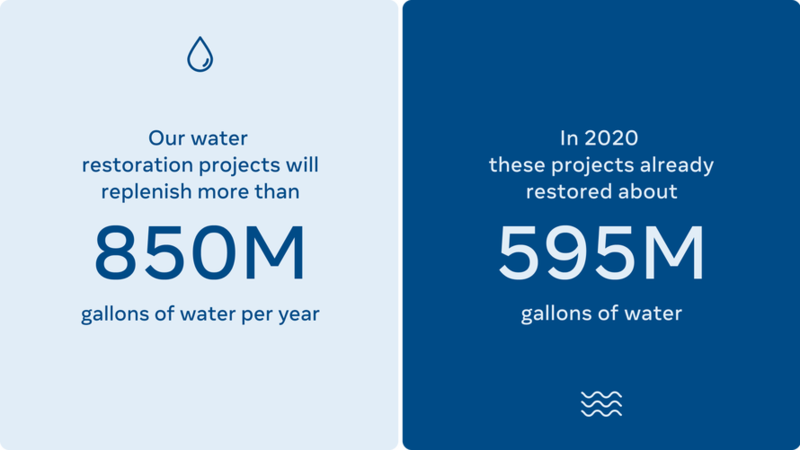
UNEP official: Every dollar invested in reviving degraded lands brings up to $30 in returns
Elizabeth Maruma Mrema, Deputy Executive Director of the United Nations Environment Program (UNEP), said every ...

Facebook has announced a new goal to be Water by 2030. This means Facebook will return more water to the environment than its consumes for its global operations.
Reaching this ambitious goal will require a combination of water restoration efforts starting in regions that are highly water stressed, as well as technologies to increase water efficiency at its facilities.
Over the last decade, Facebook has invested in new ways to make its data centers more water and energy efficient with a focus on sustainable solutions. As of 2020, the company’s entire global footprint of offices and data centers have been supported by 100% renewable energy and Facebook reached net zero emissions. The company did this in large part by investing in the development of new clean energy generation in the places where it uses the most electricity. In addition, its commitment to renewable energy has provided hundreds of billions of gallons of water savings since wind and solar energy use less water than fossil fuels.
Facebook has already been taking a similar approach with water, and has invested in water restoration projects that will replenish more than 850 million gallons of water per year. In regions experiencing high levels of water stress, these projects have already restored about 595 million gallons of water in 2020. These water restoration projects offer significant benefits both to local communities and their surrounding ecosystems, particularly in water stressed regions.
These efforts range from sustaining aquatic habitats by supplying fresh water to river systems during dry seasons and providing drinking water to Navajo Nation families, to modernizing agricultural irrigation infrastructure to reduce the amount of water being extracted from at-risk sources. In Bernalillo County, New Mexico, for example, we’re providing funding to the Rio Grande Water Fund to restore the connection between the stressed Cedro Creek and its historic floodplain. This work increases climate resiliency in the region by mitigating drought and increasing biodiversity, restoring almost 20 million gallons of water per year.
For Facebook’s current water restoration work under way in New Mexico, Arizona, Texas, Utah, Oregon and California, we partnered with trusted, local environmental non-profits and utility providers to identify projects that would have the greatest impact. In the coming years, the company plans to expand this work internationally, including in Ireland, Singapore, India, UK, and Mexico.
Beyond restoring water to local watersheds, the company will continue to find ways to reduce its water usage across its operations. For example, we use onsite recycled water systems at some of our global offices. And it will keep working to develop new technologies and operational efficiencies to make its data centers even more water efficient. Over the last decade, these technologies, including allowing its data centers to be cooled with outside air, have enabled its data centers to operate 80% more water efficiently on average compared to the industry standard.
Facebook also understands that sometimes the most impactful contributions to the sustainability of a watershed go beyond projects that return water. That’s why it is also investing in projects that may have a catalytic effect in watersheds around the world. These projects could include supporting local environmental non-profits, governance, research, and other non-volume-generating activities.
Becoming water positive by 2030 is a long-term goal, but like its goal to make its entire value chain net zero in 2030, it’s one the company is confident it can achieve based on the enormous advances made over the last decade. It believes commitments like these can make a meaningful contribution to the global race to build a more sustainable future.
Elizabeth Maruma Mrema, Deputy Executive Director of the United Nations Environment Program (UNEP), said every ...
President Abdel Fattah El Sisi issued eight directives on the Labor Day to ensure providing ...
Paysky, the leading digital payment solutions provider, was named among Forbes Top 50 Fintech companies ...


اترك تعليقا